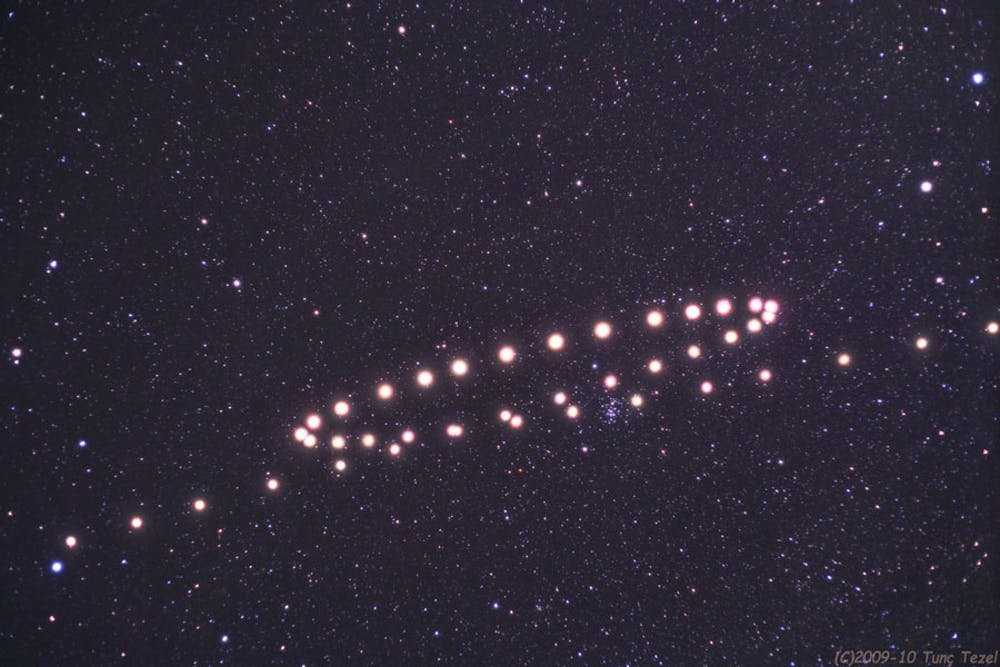
For thousands of years, humans have been looking at the night sky, searching for patterns and explanations. Starting from the advent of Newton's celestial mechanics, we have developed a well-defined picture of how the Solar System works and the Earth's place in it.
Since primary school, the idea we all have in mind is that of a moving Earth that orbits the Sun in a near-circular path. It's clear and straightforward.
But what we observe in the sky from our moving planet - which was the starting point for our ancestors - may not be that simple.
Nonetheless, supported by a Galileian "yet it moves" unwavering certainty, many tend to consider the crucial work of ancient astronomers like Ptolemy as pre-scientific ideas. That's not fair.
So, let's take some steps back.

What happens in the sky while you're stargazing from a moving frame of reference is not trivial at all, even for a proud Newton's intellectual heir.
The first thing ancient astronomers may have noticed is that the stars move during the night along arcs, maintaining their relative positions. That's why they are called fixed stars.
Since they complete their circles in 24 hours, their position depends only on the time of the day. Of course, this is not entirely correct because it also depends on the season, but let's keep it simple. So, we can find them in the same position observing the sky at a specific time every night.
What happens then is that a few stars appear to move relative to the others from one night to the next one. These celestial bodies are the planets or planētes asteres ("wandering stars"), as the Greeks called them.

The paths of the planets are complex. They seem to orbit us, but sometimes they turn back in the opposite direction of their mean motion. That's called a retrograde motion. Why are they moving so weirdly?
Trying to at least describe - if not explain - this strange behavior, Apollonius of Perga devised a geometrical model of the planets' orbit able to account for the observed retrograde motions. He proposed that the planets move in a circle around a point which in turn moves around the Earth. The first circle will be called epicycle, while the second will be called deferent.
With a system of this kind, you are left with the problem of finding the radii and angular velocities of the two circular motions that generate the observed trajectories. However, with some math trickery, you can find out all the parameters needed to describe the motions of the entire Solar System in a geocentric frame of reference.

You also get a bonus: observed changes in luminosity of planets with a peak during their retrograde motion are then explained in terms of the varying distance from the Earth. Quite impressive.
This way, astronomers like Hipparchus of Nicaea and Claudius Ptolemy were able to develop and refine a framework that would last for over a millennium for describing and predicting the Solar System planetary movements. In the Almagest, Ptolemy examines all the planets one by one, with the goal of establishing a coherent and accurate theory for each of them. When the single-epicycle system is not enough to account for the anomalies, Ptolemy adds multiple epicycles to his theory until the agreement between predictions and data is then reached.
The weakness of such a sophisticated system is its inherent complexity, which was also one of the driving forces that led to the adoption of the Copernican paradigm. Furthermore, it makes it difficult to predict a rocket's motion flying in the Solar System. But that's a modern-day problem, not something a 2th-century Egyptian astronomer could have considered.
Apart from these albeit notable aspects, it's hard to overestimate the importance the Ptolemaic model had in the development of our understanding of the Solar System. So, why do we have to consider this observation-based theoretical model as pre-scientific ideas? Not only that. Studying more deeply the history of astronomy and the Ptolemaic model at school may help students connect their abstract knowledge with the natural world out there and understand how scientific ideas arise from rigorous observations and evolve through paradigm shifts.